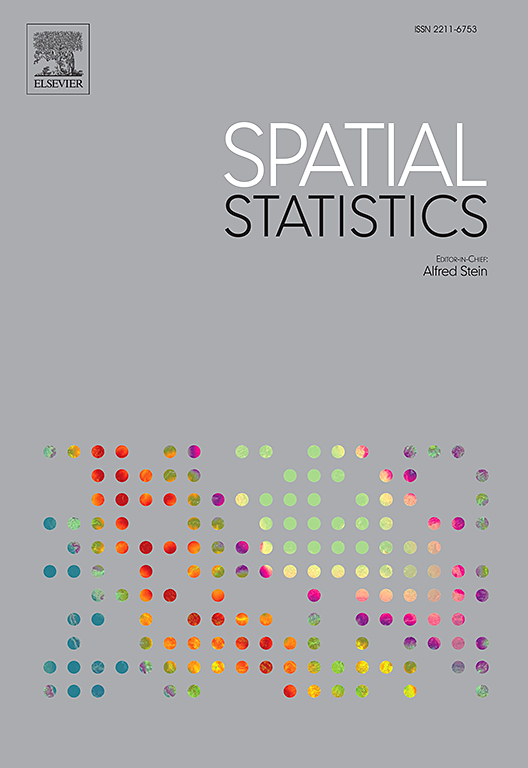Physics-driven dynamic interpolation with application to pollution satellite images
IF 2.5
2区 数学
Q3 GEOSCIENCES, MULTIDISCIPLINARY
引用次数: 0
Abstract
Satellite images using multiple wavelength channels provide crucial measurements over large areas, aiding the understanding of pollution generation and transport. However, these images often contain missing data due to cloud cover and algorithm limitations. In this paper, we introduce a novel method for interpolating missing values in satellite images by incorporating pollution transport dynamics influenced by wind patterns. Our approach utilizes a fundamental physics equation to structure the covariance of missing data, improving accuracy by considering pollution transport dynamics. To address computational challenges associated with large datasets, we implement a gradient ascent algorithm. We demonstrate the effectiveness of our method through a case study, showcasing its potential for accurate interpolation in high-resolution, spatio-temporal air pollution datasets.
物理驱动的动态插值及其在污染卫星图像中的应用
使用多波长通道的卫星图像提供了对大面积的重要测量,有助于了解污染的产生和运输。然而,由于云层覆盖和算法限制,这些图像经常包含丢失的数据。本文介绍了一种结合风型影响的污染传输动力学的卫星图像缺失值插值新方法。我们的方法利用一个基本的物理方程来构建缺失数据的协方差,通过考虑污染传输动力学来提高准确性。为了解决与大型数据集相关的计算挑战,我们实现了梯度上升算法。我们通过一个案例研究证明了我们方法的有效性,展示了它在高分辨率、时空空气污染数据集中精确插值的潜力。
本文章由计算机程序翻译,如有差异,请以英文原文为准。
求助全文
约1分钟内获得全文
求助全文
来源期刊

Spatial Statistics
GEOSCIENCES, MULTIDISCIPLINARY-MATHEMATICS, INTERDISCIPLINARY APPLICATIONS
CiteScore
4.00
自引率
21.70%
发文量
89
审稿时长
55 days
期刊介绍:
Spatial Statistics publishes articles on the theory and application of spatial and spatio-temporal statistics. It favours manuscripts that present theory generated by new applications, or in which new theory is applied to an important practical case. A purely theoretical study will only rarely be accepted. Pure case studies without methodological development are not acceptable for publication.
Spatial statistics concerns the quantitative analysis of spatial and spatio-temporal data, including their statistical dependencies, accuracy and uncertainties. Methodology for spatial statistics is typically found in probability theory, stochastic modelling and mathematical statistics as well as in information science. Spatial statistics is used in mapping, assessing spatial data quality, sampling design optimisation, modelling of dependence structures, and drawing of valid inference from a limited set of spatio-temporal data.
 求助内容:
求助内容: 应助结果提醒方式:
应助结果提醒方式:


